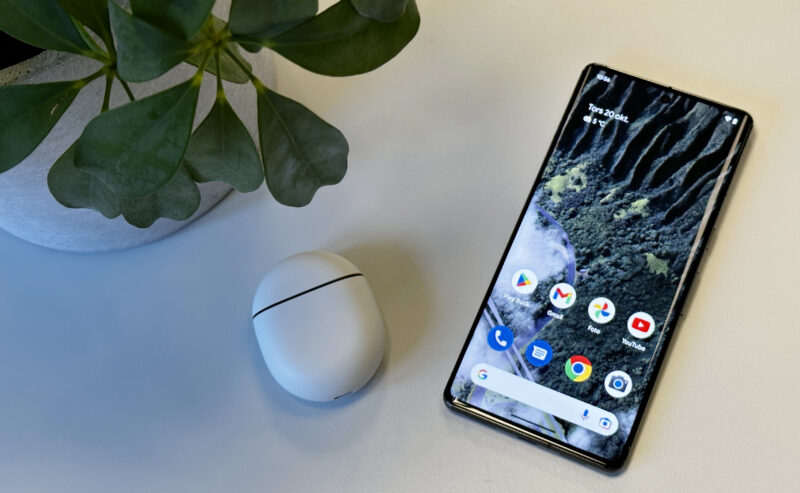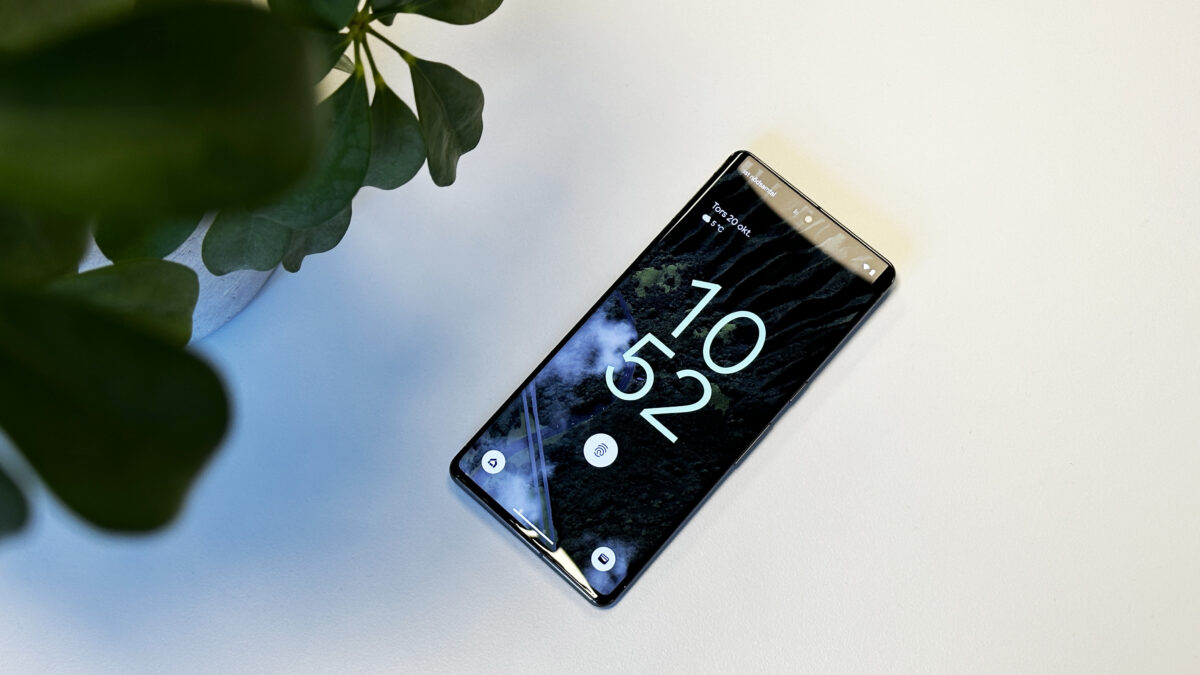Pixel 7 / 7 Pro Review: This Is Android At Its Best
Google’s phones have been around for many years now, but until just recently they couldn’t be bought in Sweden (Techcraver’s home country) without having to buy via unofficial import routes. But happily, Google finally decided to change this for this year’s phone releases and has now also launched them in Sweden, Norway, Denmark, the Netherlands and India. I’ve had the opportunity to test the flagship model Pixel 7 Pro and the cheaper Pixel 7 for about two weeks now and here are my impressions.
Design
What I’m facing here are phones that, from the front, could be a Samsung or almost any other Android phone out there. But on the other hand, there aren’t really many phones that differ on the front. The Pixel 7 Pro has slightly curved screen edges, while the Pixel 7 is more flat. They both have always on display and a selfie camera hole at the top of the middle, so in short they have no clear characteristic features on the front. The back of the Pixel’s are more distinctive with an array of cameras in a band that runs straight across the back, much like the cut-out blindfold on a ninja turtle.

Disclaimer: From here, I’ll base the rest of the review on the Pixel 7 Pro (which I’ve had more time with) and then list the differences between the Pixel 7 and Pixel 7 Pro at the end, as well as go over whether I think it’s worth paying extra for Pro.
The back of my Pixel 7 Pro review sample is black and has a porcelain-like surface, but it is glass and the band with the cameras is the same gray metallic color as the frame around the phone. It feels luxurious but at the same time balanced. The camera bump that goes over the entire phone (from side to side) means that the phone lies still on a table without wobbling like, for example, my iPhone 14 Pro does. However, it also seems that this camera bump is taking more of a beating, as I’ve already got small visible scratches on it. So a phone case seems to be preferable if you are pedantic.
Software
It’s clear to me that the Pizel 7 Pro, even though it’s Google’s flagship model, isn’t meant to beat Samsung and the iPhone in terms of benchmark scores. Inside the phone we find Google’s own Tensor G2 chip that powers the phone. It’s made to focus more on smart software solutions than raw power. With Pixel, Google has given themselves an opportunity to combine software and hardware in a way that they can’t really do when they deliver Android to other manufacturers. It’s not always easy to see how the experience differs from another Android phone however, as it’s most noticeable in small subtle stuff, like animations when using the phone.
Speaking of the software. Of course, Google ships with a long line of its own apps, such as Podcasts, Translate and Lens. The audio recorder is probably the app that impresses the most, though. Here I can record, lectures and other speech and at the same time get everything that is said transcribed into editable text – super fast. Unfortunately it only works in English, German, French and Chinese and not in Swedish at the moment, but hopefully it’s something to come, as the feature works surprisingly well.
If we’re going to continue talking about good software solutions and post-processing, the Pixel offers a lot that other phones can’t. For example, you can make photos you’ve taken in the past less blurry in Google Photos. It doesn’t always work perfectly, but when it does, it can be really impressive. It’s fun to try and can be really useful at times. The function is only available in the Pixel, but thus also works on older photos you took with other phones and cameras. Improving that old family picture from the early 20th century can be really satisfying.
Cameras
Speaking of pictures and cameras. The cameras in the Pixel 7 Pro do a good job and they often perform on par with, for example, the iPhone 14 Pro, but I rarely get the real “wow” feeling that the Pixel was able to give a couple of years ago. The night mode, for example, is good, but not fantastic. Overall, the Pixel 7 Pro simply does what you’d expect from a top-of-the-line model today, but not much more. However, there are a couple of areas where the Pixel 7 Pro still excels. For example, the zoom goes up to 30 times magnification. This is done by optical zoom and Google’s software working together in what Google calls “Super Res Zoom” where several images are taken and then joined together while noise is minimized and detail is improved with the help of AI in post-production. Once again, this is all thanks to the help of smart software development and the Tensor G2 chip.

Battery
The phone does not come with a charger, but there is support for fast charging up to 23W. In addition, the phone has wireless charging and you can use Battery Share to wirelessly charge Qi-certified phones or accessories, like Pixel Buds Pro on your Pixel 7 Pro. The battery life is not among the longest i’ve seen, but is more than acceptable and there are several levels of battery saving. Compared to my iPhone 14 Pro, I would say the battery life is noticeably better however.
Comparison
As you have probably understood by now, the special thing about Google’s proprietary phones is above all the software. This means that you get largely the same functions and experience in all Pixel phones, regardless of whether you choose the Pixel 7 or 7 Pro (or even Pixel 6A).
However, the telephoto camera and 120 Hz screen that you only get in the Pixel 7 Pro are two big differences and nothing you should automatically opt out of. The difference in size between the Pixel 7 and 7 Pro is also not very large, and since the Pixel 7 feels quite large and heavy itself, it is not an argument to opt out of the Pro model.
The regular Pixel 7 phone is quite a lot cheaper though, which I guess will be the watershed in choosing between these phones.
| Phone | Google Pixel 7 Pro | Google Pixel 7 |
| Chipset | Google Tensor G2 | Google Tensor G2 |
| RAM | 12GB | 8GB |
| Storage | 128, 256, 512GB | 128, 256GB |
| Display | 6.7-inch QHD+ (1440×3120, 19.5:9) LTPO 120Hz, 1,500 nits peak brightness, Always-On Display, Gorilla Glass Victus | 6.3-inch FHD+ (1080×2400, 20:9) 90Hz, 1,500 nits brightness, Always-On Display, Gorilla Glass Victus |
| Battery | 5003mAh, up to 23W fast charging, up to 23W wireless charging with Pixel Stand | 4355mAh, up to 20W fast charging, up to 20W wireless charging with Pixel Stand |
| Rear Cameras | 50MP f/1.85 primary (82° FoV w/OIS); 12MP f/2.2 ultra-wide with autofocus (125° FoV); 48MP f/3.5 5x telephoto w/OIS; LDAF, Spectral and flicker sensor; 5x optical and up to 30x Super Res Zoom | 50MP f/1.85 primary (82° FoV w/OIS); 12MP f/2.2 ultra-wide (114° FoV); LDAF, Spectral and flicker sensor; Up to 8x Super Res Zoom |
| Camera Features | Magic Eraser, improved Real Tone, Face Unblur, Macro Focus, Photo Unblur, Cinematic Blur, 10-bit HDR video | Magic Eraser, improved Real Tone, Face Unblur, Photo Unblur, Cinematic Blur, 10-bit HDR video |
| Front Camera | 10.8MP f/2.2 (92.8° FoV, fixed focus) | 10.8MP f/2.2 (92.8° FoV, fixed focus) |
| Connectivity | 5G (mmWave supported in the US), Wi-Fi 6E (802.11ax), Bluetooth 5.2, NFC, Ultra-Wideband, Dual-band GNSS, Dual SIM (nanoSIM + eSIM) | 5G (mmWave supported on select models), Wi-Fi 6E (802.11ax), Bluetooth 5.2, NFC, Ultra-Wideband, Dual-band GNSS, Dual SIM (nanoSIM + eSIM) |
| Dimensions | 162.9 x 76.6 x 8.9 mm, 212g, IP68 certified | 155.6 x 73.2 x 8.7 mm, 197g, IP68 certified |
| Biometric unlock | Face unlock, in-display fingerprint scanner | Face unlock, in-display fingerprint scanner |
| Software | Android 13 | Android 13 |
| Software Support | Will receive OS updates until October 2025 and security patches until October 2027 | Will receive OS updates until October 2025 and security patches until October 2027 |
| Colors | Snow, Obsidian Black, and Hazel | Snow, Obsidian Black, and Lemongrass |
| Price | Starting at 9 990 SEK ($900) | Starting at 7 290 SEK ($600) |
Verdict
Let me make this very easy for you. The Pixel 7 Pro is a truly extraordinary phone, worthy of its Pro name. Privately, I’m 100% tied up to iOS, but if I were to make the switch to Android, it’s beyond doubt that it’s the Pixel I’d go with. The software is without a doubt the best I’ve ever used (besides iOS) and the post processing for images is so good that I keep wanting to go out and take new photos and try out new subjects. There are other Android phones out there with more brutal hardware and costing significantly more. Avoid them, this is Android at its best.



